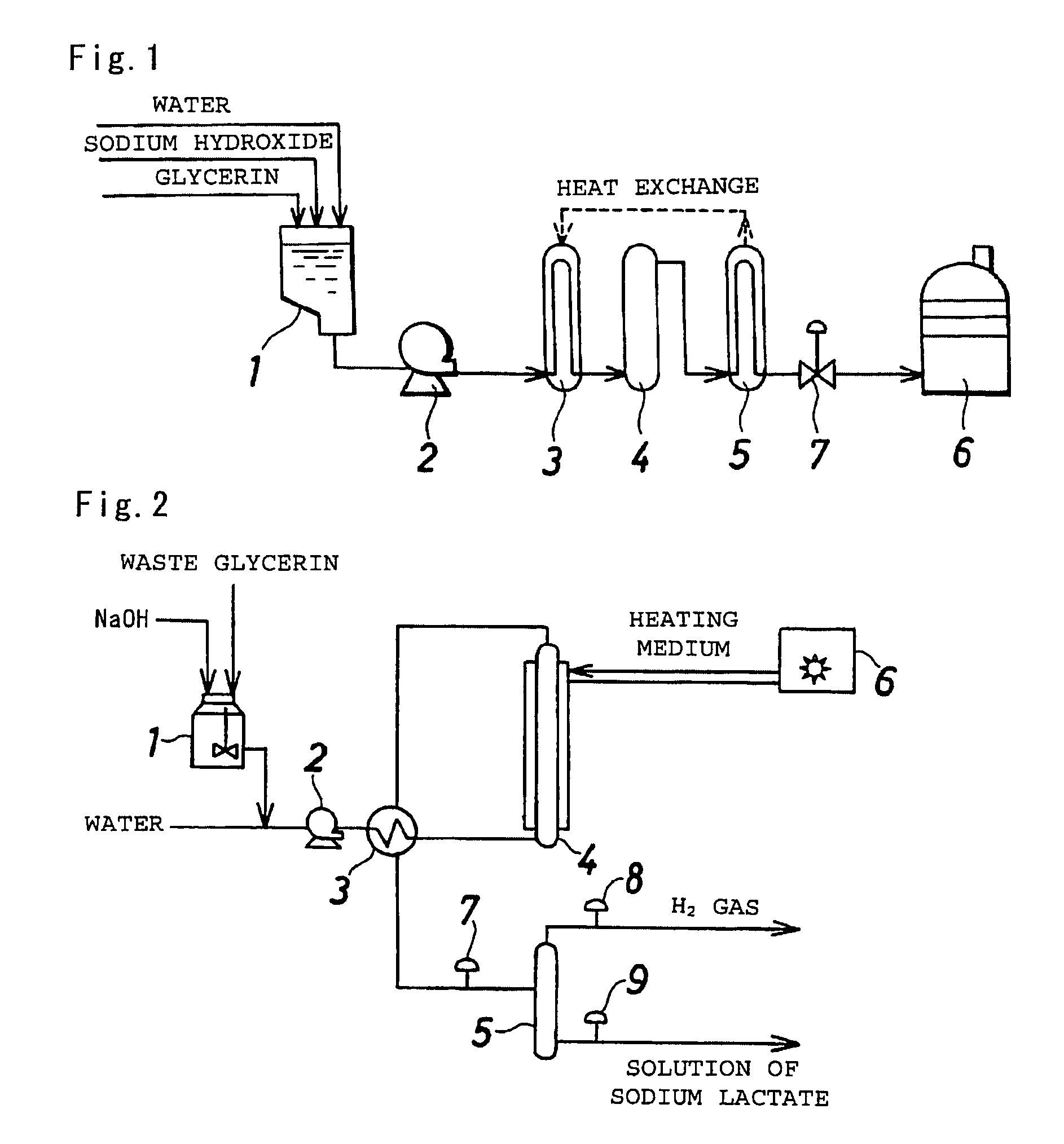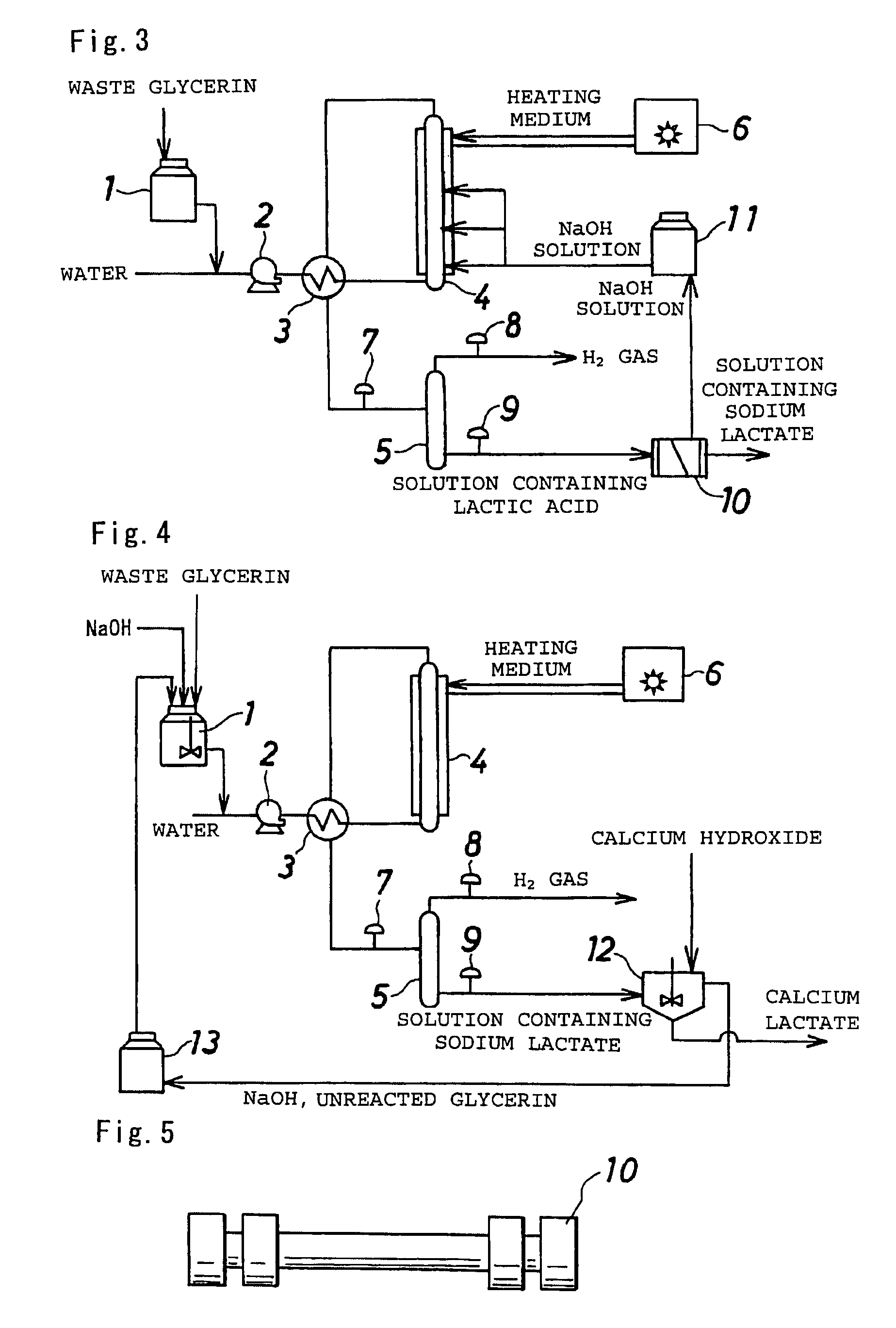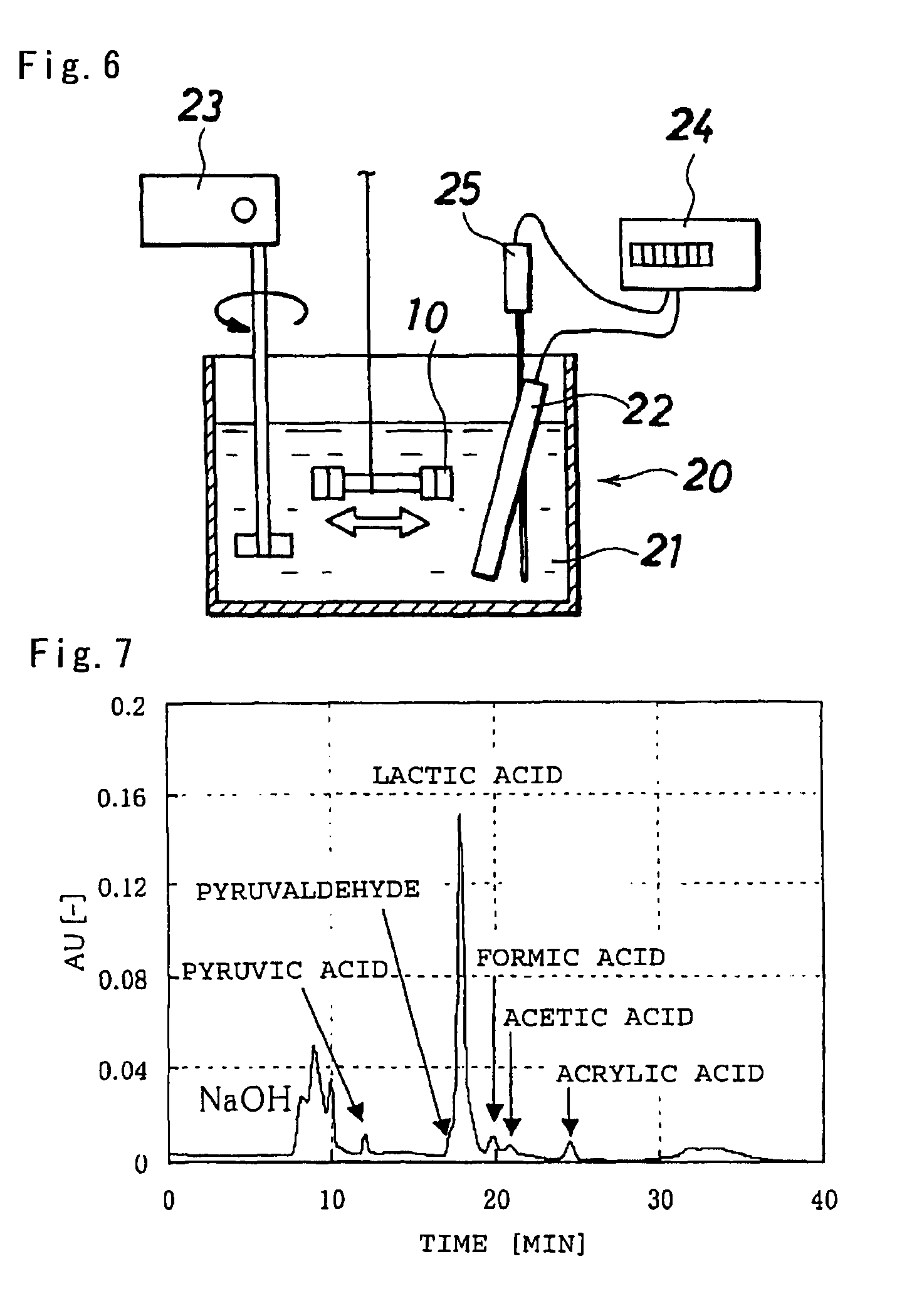Process for production of lactic acid and equipment for the production
a technology for lactic acid production and equipment, applied in chemical/physical/physical-chemical processes, biofuels, organic chemistry, etc., can solve the problems of high cost of lactic acid, process the glycerin containing alkaline catalyst, process is not efficient for obtaining lactic acid, etc., and achieves the effect of convenient application
- Summary
- Abstract
- Description
- Claims
- Application Information
AI Technical Summary
Benefits of technology
Problems solved by technology
Method used
Image
Examples
embodiment 1
[0035]FIG. 1 is a flow sheet explaining a process performed using a continuous reactor that is an example of a process for producing lactic acid in accordance with the present invention.
[0036]In the process for producing lactic acid according to the present invention, in the beginning, glycerin that is a raw material is introduced into a tank for storing a raw material (1) together with water and an alkaline component such as sodium hydroxide or the like. An alkaline solution containing glycerin stored in the tank for storing a raw material (1) goes through a high-pressure pump (2), a pre-heater (3), a reactor (4) and a cooler (5) sequentially, and, after going through a valve for controlling a pressure (7), finally reaches a tank for storing an alkaline solution containing lactic acid (6).
[0037]The respective configurations are described bellow.
[0038]The tank for storing a raw material (1) is a tank where an alkaline solution containing a desired amount of glycerin and having desir...
embodiment 2
[0048]FIG. 2 is a flow sheet explaining the apparatus for producing lactic acid according to embodiment 2.
[0049]In the apparatus for producing lactic acid according to embodiment 2, in the beginning, a discharge containing glycerin from BDF plants, oleochemical plants and so on is introduced as a raw material to a tank for storing a raw material (1). The discharge containing glycerin from BDF plants or the like as a raw material contains an alkaline component. When a content of the alkaline component is scarce, an alkaline component such as NaOH or the like is added appropriately. Furthermore, when an amount of water is scarce, water is appropriately added.
[0050]An alkaline solution containing glycerin stored in the tank for storing a raw material (1), after water is appropriately added thereto, goes through a high-pressure pump (2), a heat exchanger (3), a reactor (4), the heat exchanger (3), a valve for controlling a pressure (7) sequentially and is finally supplied to a gas-liqui...
embodiment 3
[0054]FIG. 3 is a flow sheet explaining the apparatus for producing lactic acid according to embodiment 3.
[0055]The apparatus for producing lactic acid according to the embodiment has the same constituents as those of the apparatus for producing lactic acid according to the above mentioned embodiment 2; accordingly, in the description below, the same constituents as those of the apparatus for producing lactic acid according to embodiment 2 are provided with the same reference numerals and detailed explanations are omitted.
[0056]In the apparatus for producing lactic acid according to embodiment 3, a discharge containing glycerin from BDF plants, oleochemical plants and so on is introduced as a raw material into the tank for storing a raw material (1)
[0057]An alkaline solution containing glycerin stored in the tank for storing a raw material (1), after water is appropriately added thereto, goes through a high-pressure pump (2), the heat exchanger (3), the reactor (4) and the heat exch...
PUM
 Login to View More
Login to View More Abstract
Description
Claims
Application Information
 Login to View More
Login to View More - R&D
- Intellectual Property
- Life Sciences
- Materials
- Tech Scout
- Unparalleled Data Quality
- Higher Quality Content
- 60% Fewer Hallucinations
Browse by: Latest US Patents, China's latest patents, Technical Efficacy Thesaurus, Application Domain, Technology Topic, Popular Technical Reports.
© 2025 PatSnap. All rights reserved.Legal|Privacy policy|Modern Slavery Act Transparency Statement|Sitemap|About US| Contact US: help@patsnap.com



